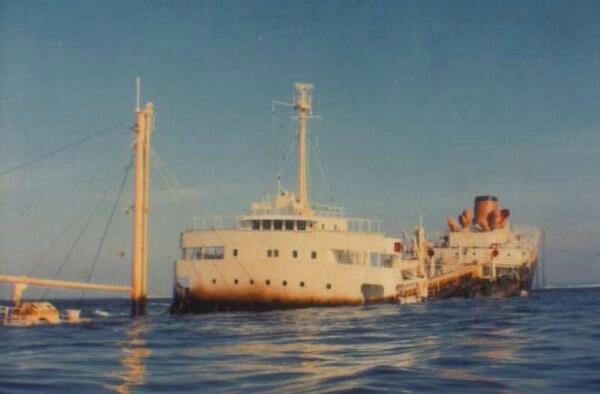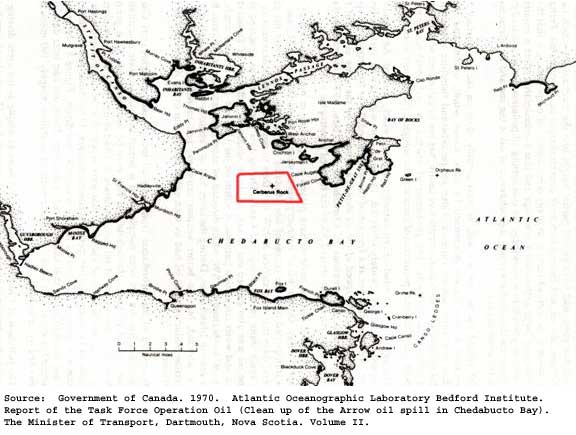ARROW was an enlarged version of the standard American wartime tanker design. She was one of the oldest tankers in the fleet of Aristotle Onassis, owned by the holding company Sunstone Marine Panama. At only 11379 Tons, she is about the size of AlgoCanada, one of the many products tankers that frequent Halifax.
On February 4, 1970 ARROW was approaching Port Hawkesbury under charter to Imperial Oil Limited and just about to complete a voyage from Aruba. She was carrying 10 million litres of Bunker “C” oil bound for a paper company near Point Tupper. Entering Chedabucto Bay, the tanker encountered severe weather and gale force winds. She ran aground on Cerberus Rock, a well-known navigational hazard that lies in wait just below the surface of the bay. While it initially appeared that there was no threat of fuel leakage, the heavy weather continued to pound the stricken tanker.
Imperial Oil issued an oil spill alert and the crew were evacuated. By the next day, an oil slick one mile long had formed and on the 8th, the ship finally split in two, with the stern sinking in deeper water. Attempts to take off the cargo were not successful nor were the attempts to recover her stern. In all, about 10,330 tons of fuel were spilled, coating 75 miles of the shoreline with thick black sludge threatening wildlife and the fishery.
Shore cleanup was a long difficult process as was the transfer of what was left of the oil aboard ARROW to the barge, IRVING WHALE (Ironically the IRVING WHALE became an another environmental concern a few months later when she sank off Prince Edward Island with oil and PCBs which had to be recovered in 1996.) The final retrieval of oil from the ARROW wreck was completed on April 11 and pioneered many clean-up techniques used in later tanker disasters.


